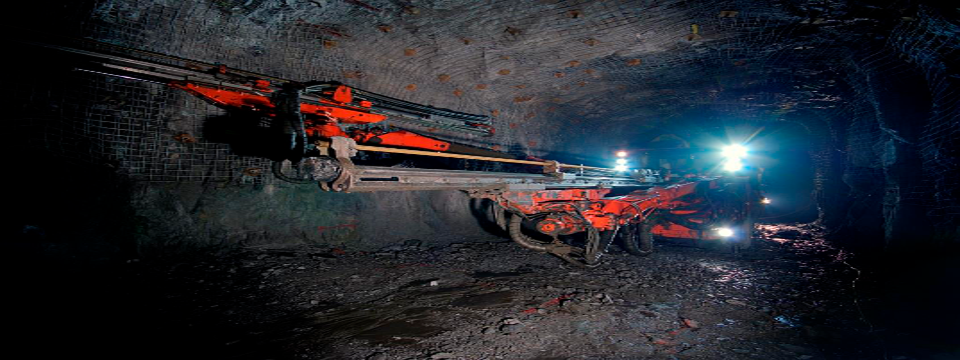
Challenge
In the tunnels of the Agnico Eagle Laronde gold mine, 2.62 kilometers below the surface of the earth, it’s a challenging environment. Air enters the mine through multiple fresh air openings, circulates through the underground tunnels filled with workers and machinery, and returns to the surface through exhaust airways. Extreme conditions in the exhaust airways, including high temperatures and humidity levels, dust filled air, machine exhaust and hot, dirty water, as well as space limitations, make chiller operating conditions a
definite challenge.
Selected for their high-temperature operation, three Trane 1000-ton chillers were installed in the mine to keep workers comfortable. Not designed for the harsh mine environment, the chillers failed, with the extreme conditions causing surging, never seen before by the company’s engineers. When the same unit failed for the second time within eighteen months, the Agnico Eagle technician called Trane engineers for help.
Solution
Trane representatives, including members of the engineering team, visited the Agnico Eagle mine in Quebec to try to determine the cause of the chiller failures. They took the failed parts back to Trane facilities in LaCrosse, Wisconsin, for analysis and provided Agnico Eagle with a full report. The broken parts were replaced, including changing a set of guide vanes to one more suitable for the extreme environment.
Troubleshooting issues, planning for expansion
While Trane worked to solve the cause of the chiller failures, Agnico Eagle planned their next mine extension, which would go deeper into the earth. Appreciating Trane’s honest, straightforward approach throughout the troubleshooting and solution finding process, Agnico Eagle agreed to consider Trane for the new leg of their mine, but only under the condition that they could first discuss the project with the Trane engineering team.
Custom designed for extreme conditions
A customer visit was arranged to the Trane facilities in LaCrosse, Wisconsin, which included a meeting with the Trane engineering team and a plant tour. Agnico Eagle management was able to ask questions and discuss the project fully. After the meeting, Agnico Eagle was convinced that the previous problems had been resolved, that Trane could build a “custom” unit that would operate under the extreme mine conditions and that Trane chillers were the most reliable on the market for this kind of project. Five Trane 1300-ton CenTraVac™ centrifugal chillers were purchased to keep Agnico Eagle’s four shifts of workers comfortable in the new mine extension.
Overcoming challenges, improving safety
The five CenTraVac chillers were shipped to Agnico Eagle for installation in the mine extension. The installation crew dismantled the chillers into three pieces and put them on a slate, which was pulled down a thirty-mile spiral ramp until it reached the case where they would be placed. Knowing that a refrigerant leak would be cause for evacuation, the Trane team took extra safety precautions as they worked. Safety features were also paramount for the equipment. With the Trane CenTraVac chillers operating at internal pressures lower than the atmospheric pressure, if a gasket should fail, air will go into the unit instead of refrigerant coming out, eliminating the impact of an underground leak.
Results
After multiple failures on previously installed Trane chillers at its mine in Quebec, Agnico Eagle met with Trane to resolve issues and improve their systems. Regaining confidence in the Trane units and the company’s ability to troubleshoot problems, Agnico Eagle installed five new 1300-ton Trane CenTraVac™ chillers in their mine extension. “We wanted to have a meeting with Trane to be sure we were in business together,” said Christian Quirion, maintenance manager, Agnico Eagle. “We met with the Trane engineers. There was a lot of expertise in the room and the teamwork was good.
“With the old 1000-ton chillers, we were running them more safely at 75 percent, but with less capacity, we were always running on the edge. With the new chillers, we will have four running and one spare. We are farther from the edge and have more flexibility and efficiency. Modifications have been done with the new chillers. They are built stronger and there is no possibility of surge. There are no mechanical issues with the new chillers. They are running well.”
“Trane took problems in hand and corrected them,” Quirion added. ”They did the job correctly and we are now satisfied. It didn’t go smoothly early on, but the last step was perfect.”
































































































